Giffnock, East Renfrewshire, Scotland, UK 作者: 来源: 发布时间:2021-07-29
I. Population and Area
Continent: Europe
Country: The U.K
State/Province: Scotland
City/Town: Giffnock, East Renfrewshire
Total Area: 67.3 (sq mi)
Population in 2011: 16.2 (thousand)
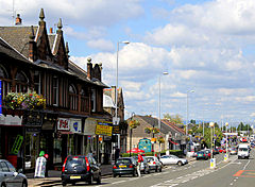
Reference Website:
https://www.google.com.hk/search?newwindow=1&safe=strict&ei=mTdtX-jeDojf-gSUv7HYBg&q=total+area+of+Giffnock%2C+East+Renfrewshire&oq=total+area+of+Giffnock%2C+East+Renfrewshire&gs_lcp=CgZwc3ktYWIQA1DSmzlY0ps5YPidOWgAcAB4AIABhQKIAYQEkgEDMi0ymAEBoAECoAEBqgEHZ3dzLXdpesABAQ&sclient=psy-ab&ved=0ahUKEwioj_ishIPsAhWIr54KHZRfDGsQ4dUDCA0&uact=5
II. Natural Geography (environment and resources)
Climate
At 55°48′9″N 4°17′43″W (55.803°, −4.30°) Giffnock is situated in Scotland's Central Lowlands. The town lies 3.7 miles (6.0 km) east of Barrhead, 5.3 miles (8.5 km) northwest of East Kilbride and 4.3 miles (6.9 km) south-southwest of Glasgow. The territory of Giffnock is contiguous with Glasgow and forms part of Greater Glasgow, the United Kingdom's fifth largest conurbation.
Terrain
Giffnock is situated on the plateau that encircles Glasgow. It is at edge of the area that defines the basin that Glasgow has developed within. The underlay is composed mainly of sedimentary rocks and freestone from the Strathclyde and Clackmannan groups of early to mid Carboniferous age (354 to 316 million years). The relatively soft and easily eroded rocks have resulted in the landform in the area being mostly flat with gentle undulations. The area of Giffnock is typically around 45 metres (148 ft) to 50 metres (160 ft) above sea level, with the highest point in the area reaching 60 metres (200 ft).
Transport
The area has a number of high-volume road links to neighbouring Glasgow. The A77 main Glasgow to Kilmarnock road passes through the centre of the town and crosses the A727 from Paisley to East Kilbride at the Eastwood Toll. The nearest motorway is the M77, of which Junction 3 Darnley is the interchange for Giffnock.
Giffnock lies within the Strathclyde Partnership for Transport Passenger transport executive and is served by three railway stations, all of which are managed by Abellio ScotRail:
·Giffnock railway station, opened on 1 January 1866,lies on the East Kilbride branch of the Glasgow South Western Line, which runs from Glasgow Central 4 miles (6.4 km) north-northeast.
·Whitecraigs railway station, opened on 1 May 1903,lies on the Neilston branch of the Cathcart Circle 5.2 miles (8.4 km) south-southwest of Glasgow Central.
·Williamwood railway station, opened on 1 May 1903,lies on the Neilston branch of the Cathcart Circle 5.2 miles (8.4 km) south-southwest of Glasgow Central.
The closest airport is Glasgow Airport, 6.8 miles (10.9 km) north-west of Giffnock. This is followed by Glasgow Prestwick Airport and then Edinburgh Airport.
Giffnock is serviced by a number of bus routes by various operators. The main bus link to the city is the number 38 line operated by First Glasgow, which runs at least every 10 minutes throughout the day.
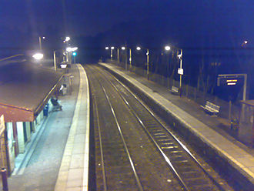
III. Economy
Salary estimated from 4 employees, users, and past and present job advertisements on Indeed in the past 36 months.
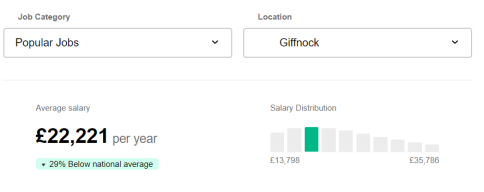
Average salary: £22,221 per year
Rural buildings can make a significant contribution to the character of an area. The stock of traditional and historic buildings is however a finite resource and repair or restoration of the existing building will be preferable to the erection of new or replacement buildings. To encourage the diversification of the rural economy, proposals for the re-use of suitable rural buildings for tourism and economic development, including for home working, farm shops, riding stables, visitor facilities and rural visitor accommodation will be considered against Policy D3. Conversions provide the opportunity to retain and enhance the architectural quality and character of the building and its setting provided they are structurally sound and capable of conversion. However, to preserve the character and landscape of rural areas all proposals will be strongly controlled.
The potential to expand leisure and tourism at a range of locations, such as Dams to Darnley Country Park, Rouken Glen Park and Whitelee Wind Farm, will also assist with growing the local economy. The sustainability of the rural economy is also important, and the Council will seek to support appropriate development in the green belt and rural areas under Policy D3.
Reference Website:
https://www.eastrenfrewshire.gov.uk/media/172/Proposed-LDP2/pdf/proposed-ldp2.pdf?m=637239421802070000
https://www.indeed.co.uk/cmp/East-Renfrewshire-Council/salaries/Teacher/Giffnock-SCT
IV. Industrial Characterisitics
Major industries:
In 1835, the first sandstone quarry in Giffnock opened. Before long, the town became known for this industry, and at its peak, there were four quarries in Giffnock, three surface quarries and one underground quarry, which together employed over 1,000 men. The quarries produced two types of sandstone: "liver rock" and "moor rock". "Liver rock" was particularly popular with masons thanks to its lack of stratification, which made the stone easy to work with. In 1854, a coal mining firm managed by civil engineers Hugh Baird and Robert Stevenson took over the running of the quarries and by 1866 the Busby Railway was built, allowing them to transport the stone by rail.] Originally, a lower level line was laid from Giffnock railway station into the Orchard Quarry to facilitate the extraction of the stone.
Sandstone from the Giffnock quarries was primarily used within the nearby city of Glasgow and can be found in older parts of the University of Glasgow and the interior of Kelvingrove Art Gallery.A small amount of trade was done with Belfast, and some of the finer "liver rock" was even transported as far as America and South Africa to build both buildings and monuments.
Quarrying in Giffnock continued until 1912 when, due to flooding and the high cost of extracting stone, work ceased. Numerous ventures tried to revitalise the quarries for other purposes, including the cultivation of mushrooms in the tunnels. As the pits began to fill with water, it became an issue that needed to be resolved. In the early 1930s, William Bearmore & Co began tipping slag from the production of steel into the Giffnock quarries. The slag tipping continued until 1969, when Derek Crouch Limited began scrap metal extraction, which lasted until the late 1970s. Today the ground is a wasteland.
Coal mining was also carried out in Giffnock, between 1850 and 1926. The coal produced was of a very poor quality and was of little value to householders. The main use of Giffnock coal was with commercial and industrial customers such as Busby Gas Works.
Major projects and related introductions:
Richardson & Starling: On the whole this company from the Cambuslang branch did a fantastic job! We were getting floorboards replaced in a cupboard and had damp works to a door way completed. All tradesmen from start to finish were fantastic and kept the areas clean and tidy when they were finished. They were polite and courteous of the fact there was a baby in the house too. The only name I got from the tradesmen who completed the work was Martin the plasterer. Would recommend this company.
V. Attractions
1. Rouken Glen Park:
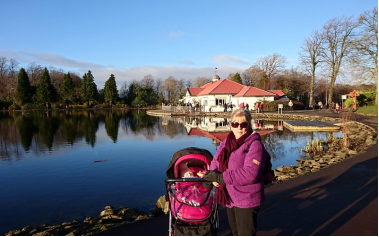
Beautiful clean park. With lots of routes to walk, the waterfall at the top is beautiful, when we visited there was pony rides £4/£5 a shot and some shows also there is a play park and lots of space for picnics could easily spend a day there in the summer ice cream van too. Last minute walk in the park on a summers evening. It could well have been the glorious weather that made the evening so enjoyable since its not every day we get it, lol. Glasgow has many parks and I have visited quite a few but this has to be up there with one of my personal favourites!
2. Eastwood Park Theatre:
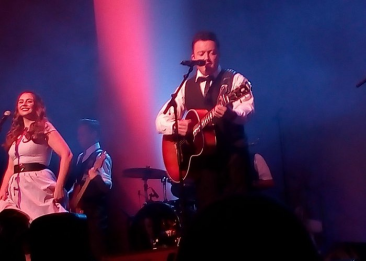
This was my second visit to this venue to see the excellent Elio Pace performing Billy Joel songs. Unlike a couple of years ago, when he performed all the hits, this time he played exclusively from 2 of Billy’s albums - unusual but very entertaining.
The venue itself has plenty of free car parking, hold c400 people in a comfortable auditorium. It’s not ultra modern and the space between seats isn’t as big as modern cinemas but it’s not bad.
There is a bar (which gets quite crowded at the interval) and a cafe so decent catering. I would happily return here for other performances.
3. Rouken Glen Garden Centre:
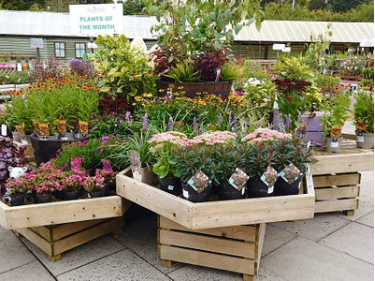
Well stocked with a wide variety of outdoor and indoor plants, a lovely gift shop too with something for everyone. It’s definitely the right time of year to review Rouken Glen garden centre! It’s a bit of a tradition for me to visit the centre a few extra times in the run up to Christmas as it’s absolutely brilliant for the little ones (though there’s lots of pretty things on display so better keeping an eye on them)
Reference Website:
https://www.tripadvisor.co.uk/Attractions-g1481141-Activities-Giffnock_East_Renfrewshire_Scotland.html
VI. History
The Scottish Gaelic name for Giffnock is Giofnag and is of partially Brythonic and Gaelic origin. 'Cefn' (i.e. 'Giff') comes from the Brythonic meaning 'ridge' and the Gaelic cnoc (i.e. 'nock') meaning "hill". In Gaelic, oc or og is a diminutive, and thus when added to cefn gives Giffnock the meaning of "Little Ridge".
The first written mention of Giffnock came in 1530, when James V presented Rockend (Ruken) Mill and the surrounding lands to Hugh Montgomerie, 1st Earl of Eglinton. The settlement of Giffnock first appeared as Gisnock, in an atlas created by Dutch cartographer Joan Blaeu in 1654, the first atlas of Scotland. Giffnock was primarily a scattered farming community until the late 1780s, when Archibald Montgomerie, 11th Earl of Eglinton was forced to partition the land into a number of small properties for sale to raise finances.
In 1835, the first sandstone quarry in Giffnock opened. Before long, the town became known for this industry, and at its peak, there were four quarries in Giffnock, three surface quarries and one underground quarry, which together employed over 1,000 men. The quarries produced two types of sandstone: "liver rock" and "moor rock". "Liver rock" was particularly popular with masons thanks to its lack of stratification, which made the stone easy to work with. In 1854, a coal mining firm managed by civil engineers Hugh Baird and Robert Stevenson took over the running of the quarries and by 1866 the Busby Railway was built, allowing them to transport the stone by rail.Originally, a lower level line was laid from Giffnock railway station into the Orchard Quarry to facilitate the extraction of the stone.
Sandstone from the Giffnock quarries was primarily used within the nearby city of Glasgow and can be found in older parts of the University of Glasgow and the interior of Kelvingrove Art Gallery. A small amount of trade was done with Belfast, and some of the finer "liver rock" was even transported as far as America and South Africa to build both buildings and monuments.
Quarrying in Giffnock continued until 1912 when, due to flooding and the high cost of extracting stone, work ceased. Numerous ventures tried to revitalise the quarries for other purposes, including the cultivation of mushrooms in the tunnels. As the pits began to fill with water, it became an issue that needed to be resolved. In the early 1930s, William Bearmore & Co began tipping slag from the production of steel into the Giffnock quarries. The slag tipping continued until 1969, when Derek Crouch Limited began scrap metal extraction, which lasted until the late 1970s. Today the ground is a wasteland.
The opening of Giffnock railway station in 1866 allowed business people to build sandstone villas and commute daily to the city. At the time, it was much more desirable to live in Giffnock than to live in the smog-polluted city. By the early 1890s, residential Giffnock began to grow around the railway station and Eastwood Toll, and by 1892 gas was introduced to the area. Gas street lamps were erected by Busby and District Gas Company in 1893; however, these were supported by a voluntary subscription that many households refused to pay, leaving many areas unlit. It was not until October 1896, when Eastwood Parish Council took over street lighting, that the area was consistently lit at night.
VII. Culture
Religion
Until the end of the nineteenth century, Giffnock had no church buildings, and religious meetings took place in the waiting room of Giffnock Railway Station and, later, in the clubhouse at Eastwood Golf Course. Orchardhill Parish Church, designed by HE Clifford and completed in 1899, was the first church built within Giffnock. Now a category B listed building, the Church is built in a Gothic revival style of architecture and is built mainly of locally quarried stone.Also located in Giffnock is Giffnock Synagogue, founded in 1938 and home to the largest Jewish religious congregation in Scotland.
Recreation
In 1936 the Tudor Cinema was constructed in Giffnock by Alex Frutin. It opened in December as a "superb suburban cinema". The Tudor was an Art Deco style building and is considered Glasgow's first "entertainment complex", featuring a ballroom and restaurant as well as the 2,400-seat cinema. Giffnock has numerous parks, including Rouken Glen, Huntly Park and Eastwood Park, where the East Renfrewshire Council offices are based. There remains some ancient woodland in Giffnock, which could be as old as 8,000 years. The lands of Rouken Glen Park originally belonged to the Scottish Crown. Ownership shifted to the Earl of Eglinton when James V presented the land to Hugh Montgomerie, 1st Earl of Eglinton on the marriage of his son in 1530. The area of the estate was farmed until the end of the 18th century and, in 1858, the estate was purchased by local merchant Walter Crum. Alexander Crum inherited the estate in 1879 and is responsible for the layout of Rouken Glen as it is today. On his sudden death in August 1893, the house passed into the hands of his brother, William Graham Crum, who later sold the estate to Archibald Cameron Corbett, MP (later Lord Rowallan) on 19 May 1905. In 1906 the estate was given to the City of Glasgow by Lord Rowallan, with the provision that it be for the "citizens of Glasgow for all time". Rouken Glen Park was officially opened on Saturday, 25 May 1906 by Lord Rowallan.
Sport
In 1905 the Whitecraigs Golf Club was founded. The course was originally designed by Willie Fernie, who was The Open Championship winner in 1883 and also designed the Ailsa course at Turnberry. Alterations to the course were made in the 1930s by James Braid, who won The Open Championship five times between 1901 and 1910. Many golfing events have been hosted by the Whitecraigs Golf Club. The club was visited by the United States Ryder Cup teams of 1929 and 1933. The teams included many golfing legends such as Walter Hagen, Gene Sarazen and Horton Smith. Whitecraigs hosted the World Senior Championship in 1976 and 1978. In 1983, Jack Nicklaus visited the club to play an exhibition match and run a clinic.
VIII. Other information
Giffnock forms part of the Western water and sewerage regions of Scotland. Waste management is provided by the East Renfrewshire local council. Water supplies are provided by Scottish Water, a government-owned corporation of the Scottish Government. Giffnock's Distribution Network Operator for electricity is Scottish Power. The NHS board is NHS Greater Glasgow and Clyde. Strathclyde Fire and Rescue is the statutory fire and rescue service. The nearest fire station is in the neighbouring settlement of Clarkston.
Policing in Giffnock is provided by Police Scotland. The Strathclyde Partnership for Transport, a public body in Scotland, has direct operational responsibilities, such as supporting (and in some cases running) local bus services and managing integrated ticketing in Giffnock and other areas from the former Strathclyde region. Transport Scotland manages the local rail network.
IX. Contact information
Mayor/Officer: Tony Buchanan
Tel: 07976 360 398
Mail: tony.buchanan@eastrenfrewshire.gov.uk
Reference Website:
https://www.eastrenfrewshire.gov.uk/councillor-tony-buchanan
